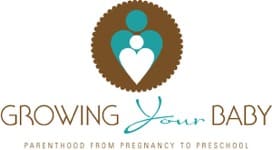When a baby is born early, particularly before 32 weeks gestation, every decision made in the neonatal intensive care unit (NICU) can have long-term implications. These fragile babies are more vulnerable to complications ranging from respiratory distress to brain injury. However, new research adds another piece to the growing puzzle of how nutrition, especially an exclusive human milk diet (EHMD), may help influence outcomes that extend far beyond the NICU.
A new retrospective study published in the Journal of Perinatology found that babies who received a diet made up entirely of human milk had a significantly lower risk of motor function impairment by age three. This study doesn’t just add to the list of benefits tied to human milk—it helps deepen our understanding of its long-term role in supporting neurodevelopment.
What Is an Exclusive Human Milk Diet (EHMD)?
An EHMD isn’t just about breastfeeding—it’s a more controlled nutritional plan that includes:
- Mother’s own milk (MOM) or donor human milk (DHM) as the base.
- Human milk-based fortifiers (HMBF) to supplement calories and nutrients for growth.
This differs from many NICU feeding practices where either formula or bovine milk-based fortifiers (BMBF) are used when mother’s milk is not available or needs extra nutrient support.
The idea behind EHMD is simple: keep everything human-derived. No cow’s milk. No synthetic formula. Just human milk and fortifiers derived from it.
Researchers looked at the medical records of 1,058 infants born before 32 weeks of gestation in 13 NICUs between 2018 and 2021. These infants were split into two groups:
- EHMD Group: Received an EHMD for at least 75% of their diet before 34 weeks postmenstrual age.
- Non-EHMD Group: Received either formula or milk with bovine fortifiers.
All infants were followed until age three, and researchers looked for any diagnosed motor function impairments using ICD-10 medical codes for conditions like hypotonia, cerebral palsy, or motor development disorders.
Key Findings: A Lower Risk of Motor Issues at Age Three
After adjusting for variables like gestational age, birth weight, and medical complications, the results showed:
- Infants who received an EHMD had a 26% lower risk of being diagnosed with motor function impairments by age three.
- The odds ratio (a statistical measure of risk) was 0.74, meaning the risk was significantly lower in the EHMD group.
- This was despite the EHMD group being born earlier and smaller, which usually correlates with more complications.
In simpler terms: even though the EHMD babies were more premature, they fared better in terms of long-term motor development.
Why Does Human Milk Have This Effect?
Human milk isn’t just food—it’s biology in a bottle. It contains bioactive compounds that help shape a baby’s development in powerful ways.
Here are some of the key ingredients that may explain the benefit:
- Lactoferrin: This protein helps reduce inflammation and may be linked to larger brain volumes in preterm babies.
- Long-chain polyunsaturated fatty acids (LC-PUFAs) like DHA and ARA: These are essential for brain development, particularly in the third trimester and early infancy.
- Human milk oligosaccharides (HMOs): Indigestible by babies but loved by good gut bacteria, these help shape the gut microbiome, reduce inflammation, and strengthen the intestinal barrier.
Together, these components may help protect and support the developing brain during a critical time.
What About Donor Milk?
Some parents might wonder: Is donor milk as good as mom’s own milk?
Not quite, but it’s still beneficial—especially when fortified correctly.
Donor milk is pasteurized, which can reduce some of the immune-boosting compounds. It’s also generally lower in calories and nutrients compared to milk from a mother feeding her own preterm baby. But when fortified with human milk-based fortifiers, it can still deliver many essential nutrients—and this study suggests that it can contribute to improved motor outcomes.
Interestingly, the EHMD group in the study often relied heavily on donor milk, especially when MOM wasn’t available. Despite this, they still showed reduced motor impairment, underscoring the value of an EHMD, even when it relies on donated milk.
How Is Motor Function Impairment Measured?
The study used ICD-10 codes from medical records to flag conditions like:
- Hypotonia (low muscle tone)
- Cerebral palsy
- Specific motor developmental disorders
These diagnoses were required to still be active by age three to be counted, which means temporary or misdiagnosed conditions were likely excluded.
While this method isn’t as thorough as using standardized developmental assessments like the Bayley Scales, it’s a real-world, practical way of tracking long-term outcomes in large groups of children.
Although the study’s findings are promising, there are still some limitations:
- It was retrospective, meaning researchers looked back at existing records instead of conducting a controlled trial.
- There were differences between hospitals in how they implemented EHMD protocols.
- It relied on physician diagnosis codes, which may vary in accuracy and interpretation.
- It didn’t include children who passed away before age three, potentially excluding the most severe cases.
Still, the research used advanced statistical methods like inverse propensity weighting to balance the two groups and reduce bias. And with over 1,000 infants included, the data is robust enough to suggest a meaningful trend.
So What Does This Mean for Parents and Providers?
For NICUs and medical teams, this research provides compelling evidence to consider broader use of EHMD in very premature infants. While cost is often cited as a barrier (human milk fortifiers are expensive), the potential to reduce long-term impairments might make a strong economic case when considering the lifetime impact of developmental delays.
For parents, it reinforces something they may already suspect: human milk matters. A lot.
If you’re a parent of a preemie, here’s what you can do:
- Provide your milk if possible: Pumping may not be easy, especially after a stressful delivery, but every drop helps.
- Ask about donor milk and fortifiers: If your milk supply is low or unavailable, ask your NICU team about using donor milk with human milk-based fortifiers.
- Be your child’s advocate: NICUs vary in protocols. Don’t be afraid to ask how feeding decisions are made and whether EHMD is offered.
Nutrition Is More Than Just Growth
We often think of feeding premature babies in terms of gaining weight and growing stronger. But nutrition is about more than the number on the scale. It’s about giving the brain, gut, and immune system the best possible start in life.
This new research reminds us that how we feed our most vulnerable babies may shape their futures in ways we’re only beginning to understand. For the families of preemies, the hope is that with every bottle of human milk, they’re giving their child not just nourishment, but a better chance to thrive.
Related Articles:
- Smallest U.S. Baby Born at 8 ounces Heads Home After a Year
- Indianapolis Police Officer Saves Premature Baby Born in Bathroom
- Breastfeeding Duration Tied to Stronger Brain and Social Skills







